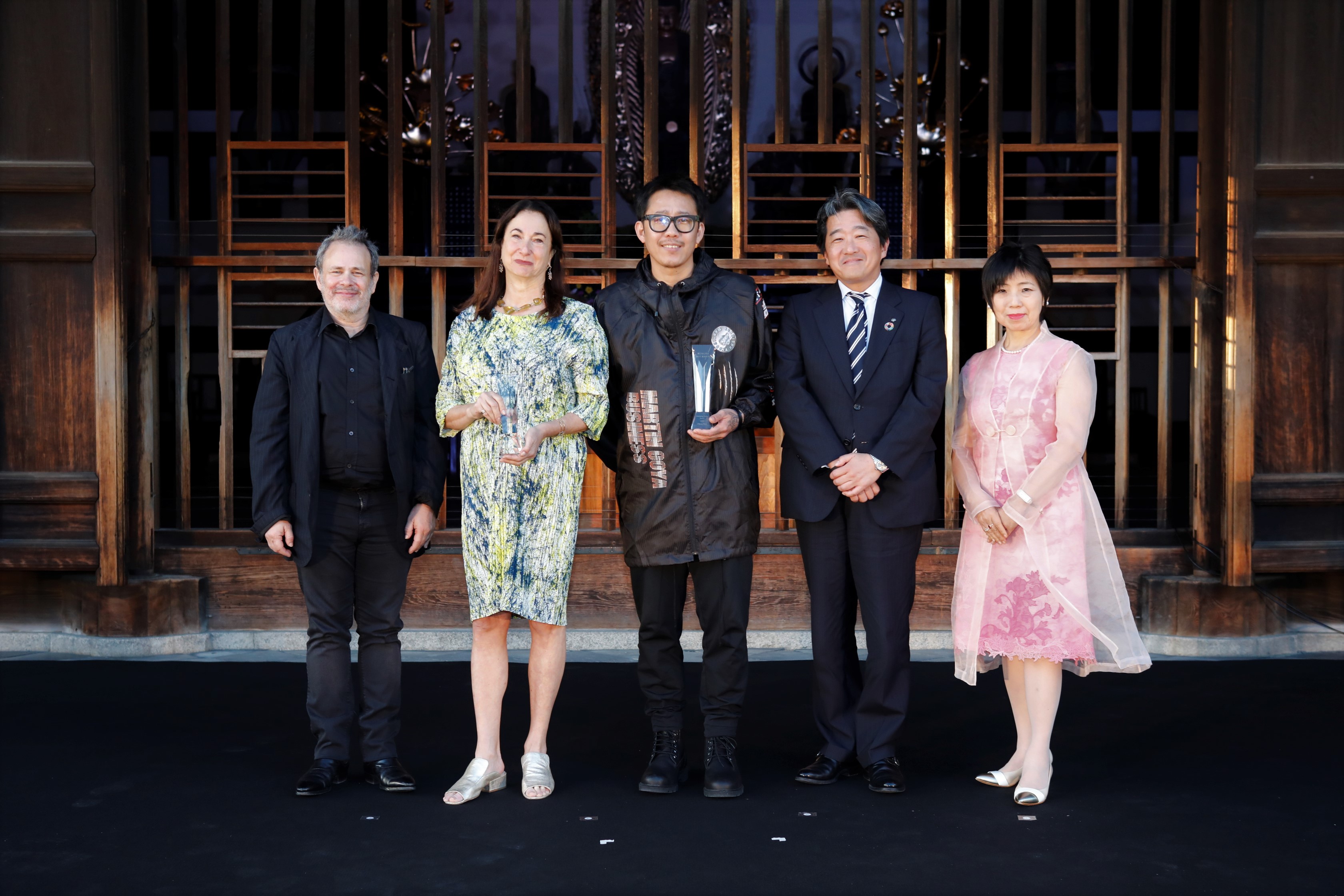
Possibly nowhere else do Post-modernity and antiquity coexist more comfortably than in Japan. So it did not seem incongruous that the global financial services company Nomura Holdings, chose Tofukuji-Hongo, a 13th-century temple in Kyoto, as the place to announce the inaugural winners of the annual Nomura Emerging Artist Awards on May 21.
New York conceptual artist Cameron Rowland and video and installation artist Cheng Ran, who lives in Hangzhou, China, will each receive $100,000 to advance projects they might otherwise struggle to pursue.
The honorees were chosen by an international jury including Kathy Halbreich, director of the Robert Rauschenberg Foundation; Yuko Hasegawa of the Museum of Contemporary Art, Tokyo; Sir Nicholas Serota, director emeritus of the Tate, who now chairs Arts Council England; Allan Schwartzman, chairman of the Fine Arts Division of Sotheby’s; Doryun Chong, deputy director and chief curator at M+; Max Hollein, director of the Metropolitan Museum of Art; and the late curator and critic Okwui Enwezor.
Each artist’s work presents exceptional and unconventional challenges demanding economic support beyond what any potential market for their art is likely to provide.
“The idea that we have a prize for artists was core to the program from the beginning,” Schwartzman told artnet News before the award ceremony in Kyoto. “Nomura came to us to help them conceive of a major cultural initiative that could have meaningful impact in the visual arts today. So we suggested a prize, what that prize would be oriented toward, what the amounts would be.” He added: “The emerging artist awards acknowledge that the economics of being an artist can compromise or diminish what an artist has the ability to make.”
More than a dozen nominators (“people down in the art world trenches,” Schwartzman says), who remain anonymous, were invited to submit suggestions of artists deserving of financial support.
Cameron Rowland, Installation view of “91020000” (2016) at Artists Space, New York. Image courtesy the artist and ESSEX STREET, New York.
“At least half of the artists named I’d never heard of, and I think the same was true of the other jurors,” Schwartzman said. “So that was really exciting to realize how much good work is out there being made.”
Rowland works with found objects and documentation in a manner that critics might link with artists such as Hans Haacke, David Hammons, Doris Salcedo, and Danh Vo. The objects Rowland arrays gain power not from their aesthetic character, but from his deep research into their troubled histories, which frequently reference forgotten or invisible structures supportive of slavery in America, including the contemporary exploitation of prison labor.
Born in Philadelphia, a city with its own fraught history of struggle for equity, Rowland draws on his own experience to sensitize his audiences to submerged undercurrents of economic and racial injustice beneath the surface of everyday life.
Rowland prefers to skirt the art market, and has gained recognition despite his relative unmarketability. He has been this subject of solo exhibitions at the Museum of Contemporary Art, Los Angeles, Artists Space in New York, and galleries in Belgium, Germany, and Switzerland. Because he was unable to travel to Kyoto to collect his prize, Halbreich accepted on his behalf.
Nomura Emerging Artist Award recipient Cheng Ran and Senior Managing Director of Nomura Hajime Ikeda.
In conversation before the early evening ceremony, Cheng Ran, the other award winner, spoke modestly and humorously in heavily Mandarin-accented English about his development as an artist.
He began by studying painting in China, where most of the historical precedents offered to him were Russian, but soon became dissatisfied and quit. Far more exciting to him were films and videos from the West bootlegged by members of the so-called saw-gash generation, named for the cuts made in edges of CDs and DVDs, to make them supposedly unplayable and unsaleable.
A residency in New York resulted in Diary of a Madman (2017), which became the basis of his solo show at the New Museum. Taking its cue from a famous 1918 story by Lu Xun, it looks at New York from pictorial and narrative angles that re-mystify the city’s mundane drama from outsiders’ perspectives.
Installation view of “Cheng Ran: Diary of a Madman” (2016). Photo: Maris Hutchinson/EPW Studio, courtesy of the New Museum.
Attracted by cities as diverse as Hong Kong, New York, and Jerusalem because of their multidimensional landscapes of conflict, Cheng confessed fascination with a “correlation between city problems and problems of my bodily experience.” He is now completing an anthology of 100 short videos inspired in part by Michelangelo Antonioni’s 1972 documentary of China under Mao.
The awards align with recent curatorial practice favoring artists of diverse backgrounds, addressing a global audience, with sensibilities grounded in social concern.
“We are relative newcomers to this form of support for contemporary art,” Nomura senior director Hajime Ikeda said in an interview. “Our objective is not to set an example for other corporations. But if they decide also to contribute some form of support for the arts, that would be very good.”
The Nomura Emerging Artist Awards are just a prelude to the major Nomura Award of US$1,000,000, selected by the same jury, to be bestowed in October. The award will recognize lifetime achievement but is intended to aid the production of a major exhibition or publication, or perhaps a public project on a scale not possible before.
As to the main prize, Schwartzman said: “There were many different artists and kinds of artists whose names came up, and I would say that six or eight of them were equally worthy. Let’s just say that ours may not necessarily appear to be an obvious choice, but it will be clear, once it’s announced, why that artist was chosen.”